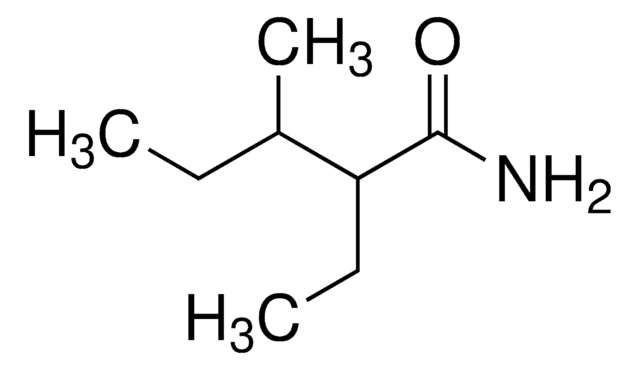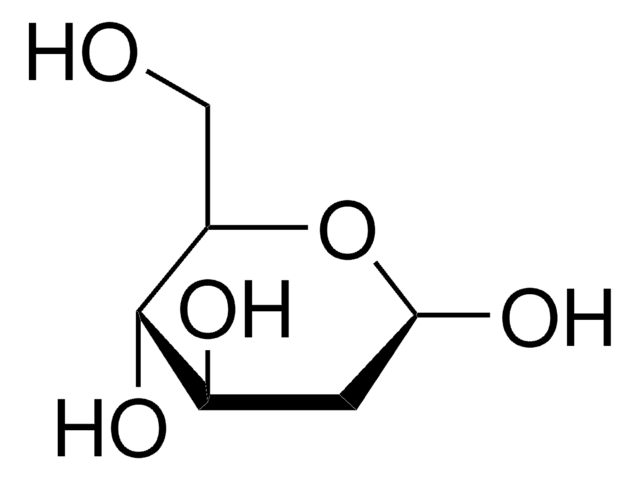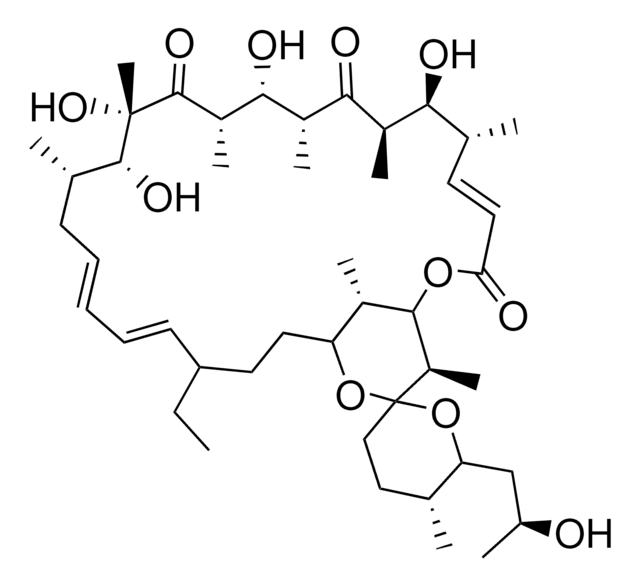추천 제품
제품명
BPTES, ≥95% (HPLC)
Quality Level
분석
≥95% (HPLC)
양식
powder
색상
white to beige
solubility
DMSO: 10 mg/mL, clear
저장 온도
2-8°C
SMILES string
O=C(CC1=CC=CC=C1)NC2=NN=C(S2)CCSCCC3=NN=C(NC(CC4=CC=CC=C4)=O)S3
InChI
1S/C24H24N6O2S3/c31-19(15-17-7-3-1-4-8-17)25-23-29-27-21(34-23)11-13-33-14-12-22-28-30-24(35-22)26-20(32)16-18-9-5-2-6-10-18/h1-10H,11-16H2,(H,25,29,31)(H,26,30,32)
InChI key
MDJIPXYRSZHCFS-UHFFFAOYSA-N
애플리케이션
Bis-2-(5-phenylacetamido-1,3,4-thiadiazol-2-yl)ethyl sulfide (BPTES) has been used as a glutaminase inhibitor.
생화학적/생리학적 작용
BPTES is a selective inhibitor of Glutaminase GLS1 (KGA), which is found in the kidney and brain, and is positively regulated by myc and strongly expressed in many tumors and tumor cell lines. Glutaminase converts glutamine to glutamate, which is an important excitatory neurotransmitter in brain and can be further oxidized to α-ketoglutarate to feed the tricarboxylic acid (TCA) cycle and to glutathione, which is important for controlling the level of reactive oxygen species (ROS), particularly important for cancer cell growth. BPTES was found to slow growth of glioma cells. BPTES is a noncompetitive inhibitor with a Ki of 3 μM.
BPTES is a selective inhibitor of Glutaminase GLS1.
Vaccinia virus (VACV) requires glutamine metabolism for its optimal replication. Inhibition of glutaminolysis by bis-2-(5-phenylacetamido-1,3,4-thiadiazol-2-yl)ethyl sulfide (BPTES) can be a potential method to treat poxvirus infections.
신호어
Warning
유해 및 위험 성명서
Hazard Classifications
Eye Irrit. 2 - Skin Irrit. 2 - STOT SE 3
표적 기관
Respiratory system
Storage Class Code
11 - Combustible Solids
WGK
WGK 3
Flash Point (°F)
Not applicable
Flash Point (°C)
Not applicable
이미 열람한 고객
Jitka Soukupova et al.
Scientific reports, 7(1), 12486-12486 (2017-10-04)
Transforming Growth Factor beta (TGF-β) induces tumor cell migration and invasion. However, its role in inducing metabolic reprogramming is poorly understood. Here we analyzed the metabolic profile of hepatocellular carcinoma (HCC) cells that show differences in TGF-β expression. Oxygen consumption
Brian E Hsu et al.
Cell reports, 27(13), 3902-3915 (2019-06-27)
Neutrophils are phenotypically heterogeneous and exert either anti- or pro-metastatic functions. We show that cancer-cell-derived G-CSF is necessary, but not sufficient, to mobilize immature low-density neutrophils (iLDNs) that promote liver metastasis. In contrast, mature high-density neutrophils inhibit the formation of
Jorge Domínguez-Andrés et al.
PLoS pathogens, 13(9), e1006632-e1006632 (2017-09-19)
Monocytes are innate immune cells that play a pivotal role in antifungal immunity, but little is known regarding the cellular metabolic events that regulate their function during infection. Using complementary transcriptomic and immunological studies in human primary monocytes, we show
T Q Tran et al.
Oncogene, 36(14), 1991-2001 (2016-10-11)
Cancer cells depend on glutamine to sustain their increased proliferation and manage oxidative stress, yet glutamine is often depleted at tumor sites owing to excessive cellular consumption and poor vascularization. We have previously reported that p53 protein, although a well-known
Glutamine metabolism regulates autophagy-dependent mTORC1 reactivation during amino acid starvation.
Hayden Weng Siong Tan et al.
Nature communications, 8(1), 338-338 (2017-08-25)
Activation of autophagy and elevation of glutamine synthesis represent key adaptations to maintain amino acid balance during starvation. In this study, we investigate the role of autophagy and glutamine on the regulation of mTORC1, a critical kinase that regulates cell
관련 콘텐츠
DISCOVER Bioactive Small Molecules for Nitric Oxide & Cell Stress Research
자사의 과학자팀은 생명 과학, 재료 과학, 화학 합성, 크로마토그래피, 분석 및 기타 많은 영역을 포함한 모든 과학 분야에 경험이 있습니다..
고객지원팀으로 연락바랍니다.
















